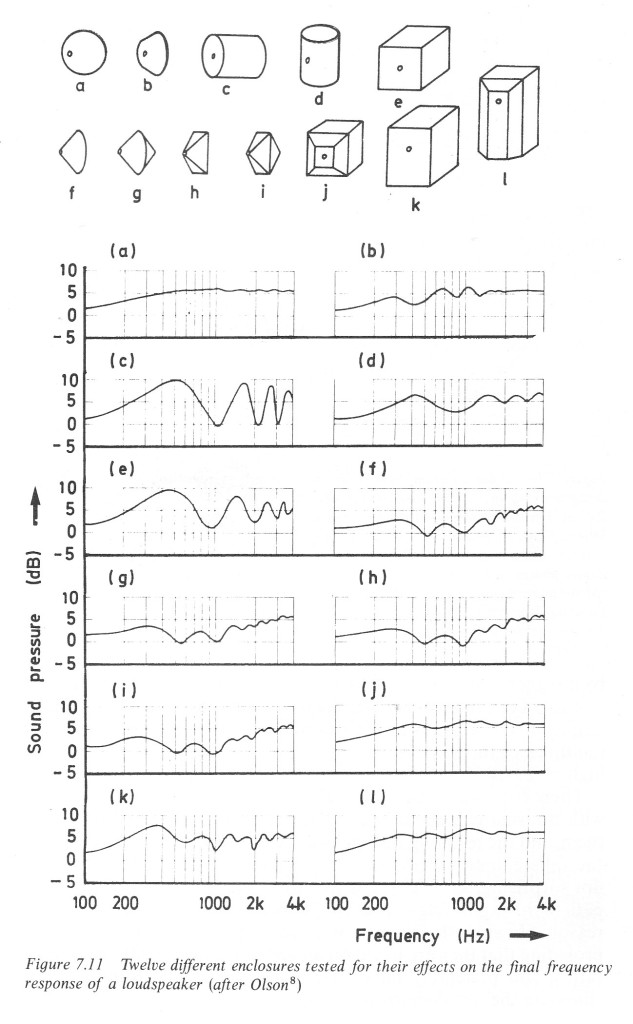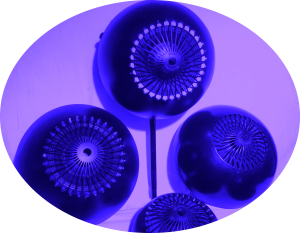Your problems solved…
Common Speaker Problems that
Sonusphere Solves
Guitar and Bass
The problems:
You bought all the fancy pre-amps and effects, but still can’t find your sound? You may be playing through a speaker enclosure that lacks flat response. The guitar that you play may benefit from a mid-range hump. But many guitars and most other instruments speak best through flat response set-ups. So, you may be using your controls to compensate for inherent problems rather than to start from a neutral point and create your ideal sound.
While playing you step in and out of the ideal zone for hearing your guitar the way that you prefer. It is likely your point source speakers are not projecting the same sound all around. Your standard directional speaker is only allowing your ideal tone to project within a limited range of width on stage (and beyond). Your tone may be ideal as you hear it on stage, but to those people who are off stage, they either can’t hear you or find your sound lacking. It is because your speaker is not projecting the same sound in all directions. This is likely due to those listeners being located within ‘uneven tone’ shadows, especially to the sides of the stage. Other band members complain that your tone is too muffled to be able to tell the entirety of what you are playing or perhaps they cannot hear you at all. So you find yourself positioning your speaker(s) aimed in a direction that is not ideal for your ears.
The Sonusphere solution:
The Sonusphere is inherently the most ideal speaker enclosure shape for providing flat response. Flat response is widely considered the gold standard. For amplified instrument performance, you simply cannot develop your ideal sound from a better starting platform.
The Sonusphere projects the maximum amount of each applicable frequency in the instrument’s range and disperses the sound to the widest 3-D spread that is possible from an extremely lightweight and minimally sized enclosure. Plus, the Sonusphere projects virtually the same sound throughout all on-stage performance zones and to all listeners spread throughout a moderate-sized club and concert venue. You do not need to ‘aim’ the Sonusphere.
Bass
The problems:
When you step out of the small tone-zone, sweet spot provided by your standard speaker, you can hear only muff-tones. Your drummer can’t hear you unless you aim your speaker at him/her, but then the guitarist or pianist is not positioned to hear you well. You place your speaker behind you thinking that you will hear yourself better, but you are too close to it and the sound does not bloom until it is past you.
You bought a speaker sporting a down firing band-pass woofer and front-loaded directional mid/highs. They said that you would be able to hear yourself everywhere. But all you hear are the subs and little of the sweet mids and uneven harmonics when you step to the sides of the enclosure. Additionally, your overall sound changes depending on where and how you set up your speaker on stage. Suffice it to say that the down-firing speaker is under the cabinet. The space underneath is essentially an unrefined and only roughly calculated area, somewhat like a crude port. It is not finely tuned for the task, and does not offer repeatable results when used in different performance situations.
The Sonusphere solution:
Bass frequencies normally spread more broadly as the frequencies become lower. When a traditional front-loaded speaker mounted on a flat panel processes a bass note, the note starts to spread out and it begins to hit that front panel or worse the panels edges and break-up or diffract unpredictably. Also, just around that front panel edge is a gigantic shadow area where only the lowest frequencies, the most muffled tones venture. They are the ones that clog up your ears and are indistinguishable. Due to the continuous 360-D curving of the Sonusphere away from the driver, negligible cabinet face diffraction nor shadow is present.
The Sonuspheres’ front facing Eminence driver delivers all of the point-source sound of a standard speaker box. Additionally, Sonusphere speakers provide the full potential range of frequencies around the entire curved surface of the enclosure—frequencies that are normally not present when playing through standard flat-front panel speaker cabinets. The box cabinets that have a slightly curved front face only increase the spread to a limited degree. They are merely a nod to the potential realized by the Sonusphere.
The Sonusphere P.A. and B18 bass models feature a unique and finely tuned dual port system innovated by Sound Composites that is not only accurate, but spreads the port’s sonic information smoothly in all directions.
In small settings one Sonusphere speaker can perform perfectly as both a stage monitor and a main. This applies regardless of its placement anywhere from the front to back of most stage set-ups. All of the potential sound that you have in your bass is going to be heard.
PA Speaker
The problems:
Your voice, when run through the PA mains and monitors, simply does not sound like you, no matter how your tweak the mixer’s tone controls.
Your monitor wedges have to be ‘in-your-face’ bright and uncomfortably loud so that you can hear vocals over the on-stage din. When this happens, you find yourself continually gritting your teeth and cursing the nasty shrill peaks that pierce your eardrums. When the music stops, you are left with ringing ears.
 The Sonusphere solution:
The Sonusphere solution:
The flat response inherent in Sonusphere loudspeakers accurately translates your voice and/or acoustic instrument as naturally as the mixer pre-amp is capable of delivering. Thus, the subtle sweetness, soul or grit of your vocals will project out of these speakers transparently.
Why flat response is the gold standard for speaker systems?
Acoustical engineering literature acknowledges that a sphere is the optimum enclosure shape for providing flat response. By contrast, of 12 classic shape geometries, a cubical box is the fourth best and the common rectangular box is the fifth. Flat response is the accepted gold standard for music listening and most live performance. See the sonic properties of various speaker shapes in Figure 7-11 above. Twelve different enclosures tested for their effects on the final frequency response of a loudspeaker (after Olson). Source: Martin Colloms, “High Performance Loudspeakers,” 3rd ed., Pentech Press, 1988.
High Performance Loudspeakers; Third Edition Matin Colloms Pentech Press
pages 228=-229
The 6 dB response step
‘Consider an ideal piston drive unit which possesses a theoretical uniform response when mounted in an infinite baffle. If positioned on the front face of a tall tubular enclosure, the resulting axial response would exhibit a distinct step of 6 dB at the transition between omni-directional radiation at the lower frequencies and the forward directed hemispherical radiation at higher frequencies. This irregularity is difficult to equalise and in consequence this cabinet shape is avoided by designers. Olsen’s classic set of responses for an identical driver in a series of cabinets shows that the 6 dB step is not present at a single frequency but appears as a series of ripples in the response curve at multiples of basic frequency, with a peak amplitude as high as 10 dB (Fig. 7.11).
These curves are valuable to all designers who seek to experiment with unusual cabinet shapes. Olsen appears to have tried most of them, and the resulting responses are worthy of closer inspection. ‘A’, the sphere, undoubtably gives the smoothest characteristic. This is not surprising, as its shape is free from sharp discontinuities in the path of the expanding sound field.’
